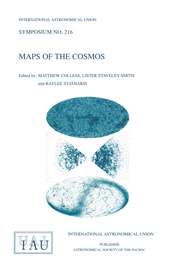No CrossRef data available.
Article contents
Models for Wolf-Rayet and O star populations in starbursts: new developments and applications to large samples of Wolf-Rayet galaxies
Published online by Cambridge University Press: 25 May 2016
Abstract
We summarise recent developments on synthesis models for massive star populations with a particular emphasis on Wolf-Rayet stars. Quantitative analyses of the stellar content of WR galaxies are reviewed. Comparing observations of WR galaxies from various samples with synthesis models we derive constraints on their burst properties. The observations indicate very short burst periods and are generally compatible with a Salpeter IMF and a large upper mass cut-off. The use of the Hβ equivalent width as an age indicator works well for WR galaxies. We briefly summarise comparisons of stellar populations in super star clusters which also provide useful contraints on evolutionary models for massive stars e.g., at very low metallicities inaccessible in the Local Group. In particular the observed WN and WC populations favour the high mass loss models of Meynet et al. (1994). Finally we review recent work on the origin of nebular He II emission. From the new catalogue of WR galaxies and high excitation HII regions of Schaerer et al. (1999) we find a close relation between the presence of nebular He II and WR stars. The analysis of individual WR galaxies including IZw 18 supports the suggestion of Schaerer (1996) that hot WR stars are responsible for the hard ionizing flux.
- Type
- Part 5. Wolf-Rayet stars and other massive stars in starburst galaxies: the case of Wolf-Rayet galaxies (integrated spectra)
- Information
- Copyright
- Copyright © Astronomical Society of the Pacific 1999


